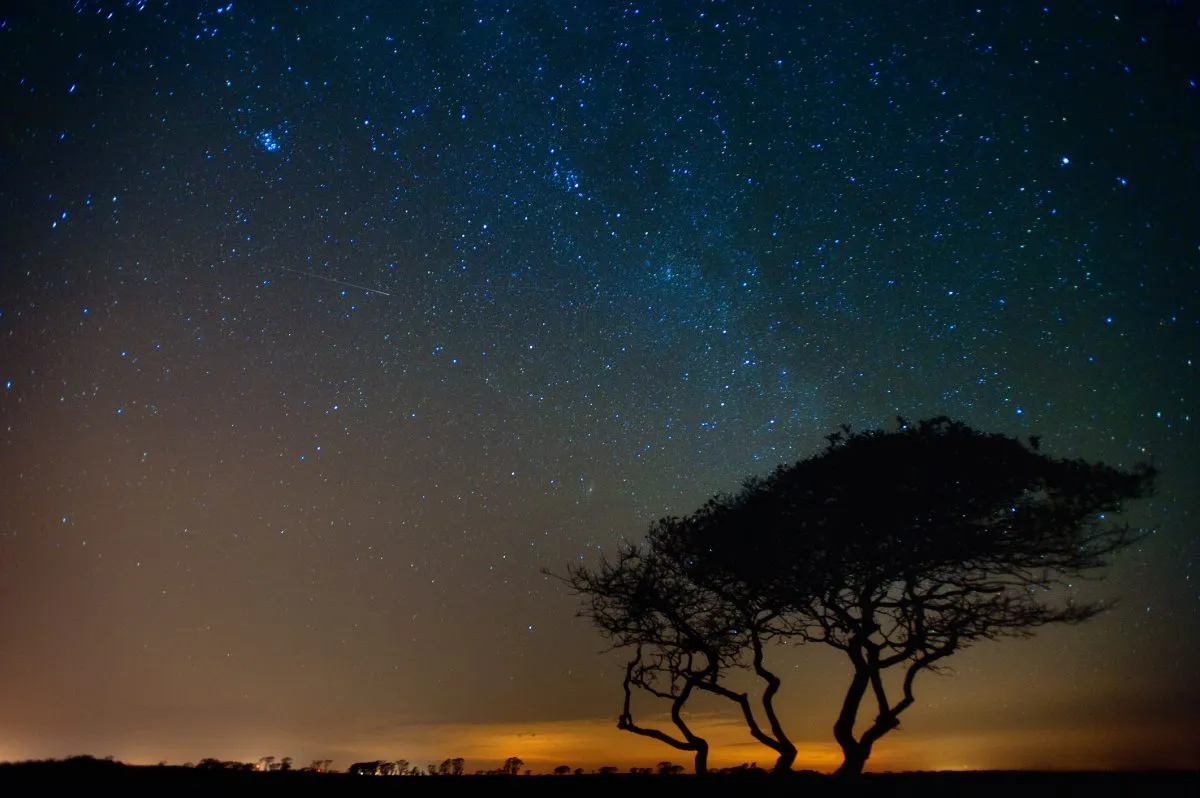This week is the perfect chance to see two of the most talked-about celestial events in recent weeks.
Comet Lemmon is at its closest point to Earth, and the Orionid meteor shower is at peak activity.
What's more, the Moon is out of the way, giving us the best chance possible to see both events under dark skies.
Here we'll reveal where to look and when, so you can see both.
Get weekly stargazing advice by signing up to our e-newsletter and subscribing to our YouTube channel

Comet Lemmon
It feels like at least once a year, a comet appears that gets everyone talking and looking up at the night sky.
That comet is currently C/2025 A6 (Lemmon), which is visible in the Northern Hemisphere in the early evening.
It's reported as being magnitude +4, magnitude being the unit used by astronomers to describe how bright an object appears in the sky.
Somewhat counterintuitively for beginners, a minus magnitude number is brighter than a positive number. So, for example, magnitude –4 is much brighter than magnitude +4.
But magnitude +4 means this is a bright comet, relatively speaking, although you'll likely need binoculars or a telescope to see it, unless you have very good eyesight and dark skies free of clouds and light pollution.

Comet Lemmon is currently just to the 'left' of the constellation Boötes, not far from star Izar. That means it's visible in the west just after sunset.
The time between 19:00 and 20:00 is probably your best bet for spotting it this week.
Comets move by quite a large amount, night after night, and comet Lemmon will appear to move 'left' across the sky from day to day.
By the end of October, the comet will have passed across much of the constellation Serpens.
Now's your best chance to see Comet Lemmon, as it will soon be lost from view and not visible for another 1,300 years.
Orionid meteor shower

While you're out spotting Comet Lemmon, see if you can spot a shooting star, too.
The Orionid meteor shower is active from 2 October – 7 November, and it's just reached peak activity.
What's more, the radiant – the region of sky from which the meteors appear to originate – rises after the Moon sets, meaning the sky is nice and dark and perfect for seeing an Orionid meteor.
The Orionid meteor shower's radiant is along the top of the constellation Orion, which is where the meteors get their name from.
If you do see both Comet Lemmon and an Orionid tonight, you're technically seeing two comets in one night.

That's because the Orionid meteors are tiny specks of debris from Halley's Comet, burning up in our atmosphere.
As comets orbit our Solar System, they leave streams of debris in their wake.
And as our planet orbits the Sun, it passes through these streams of debris, giving us meteor showers.
That's why the annual meteor showers always happen at the same time every year.
Observing a meteor shower is best done with the naked eye, as binoculars or a telescope will restrict your view.
You'll need dark skies, and it's best to avoid looking at bright lights, such as your mobile phone, so that your eyes can properly adapt to the dark.
Look in the night sky about two thirds the way up from the horizon. If you see a meteor and can trace its movement backwards towards the constellation Orion, chances are you've see an Orionid!
For more advice, read our guide on how to observe the Orionid meteor shower.
If you do see or photograph comet Lemmon or an Orionid, be sure to share your experiences and images with us by emailing contactus@skyatnightmagazine.com

